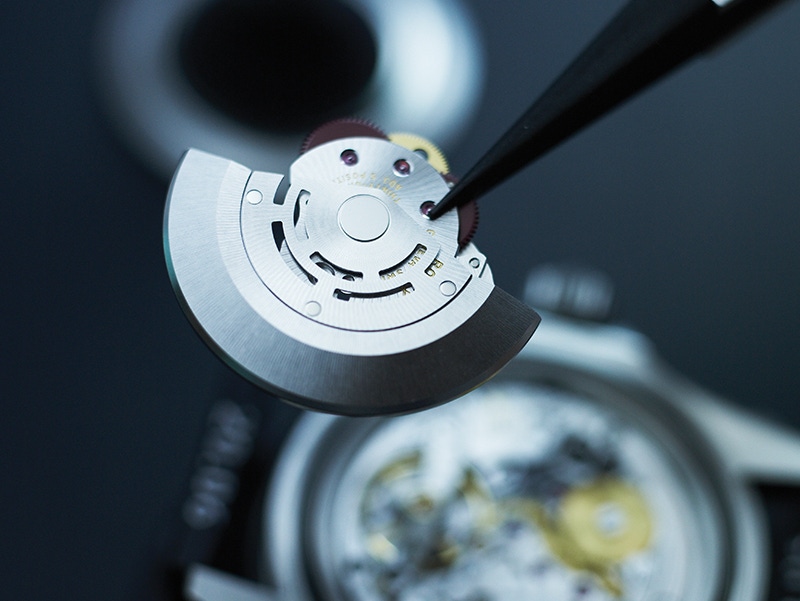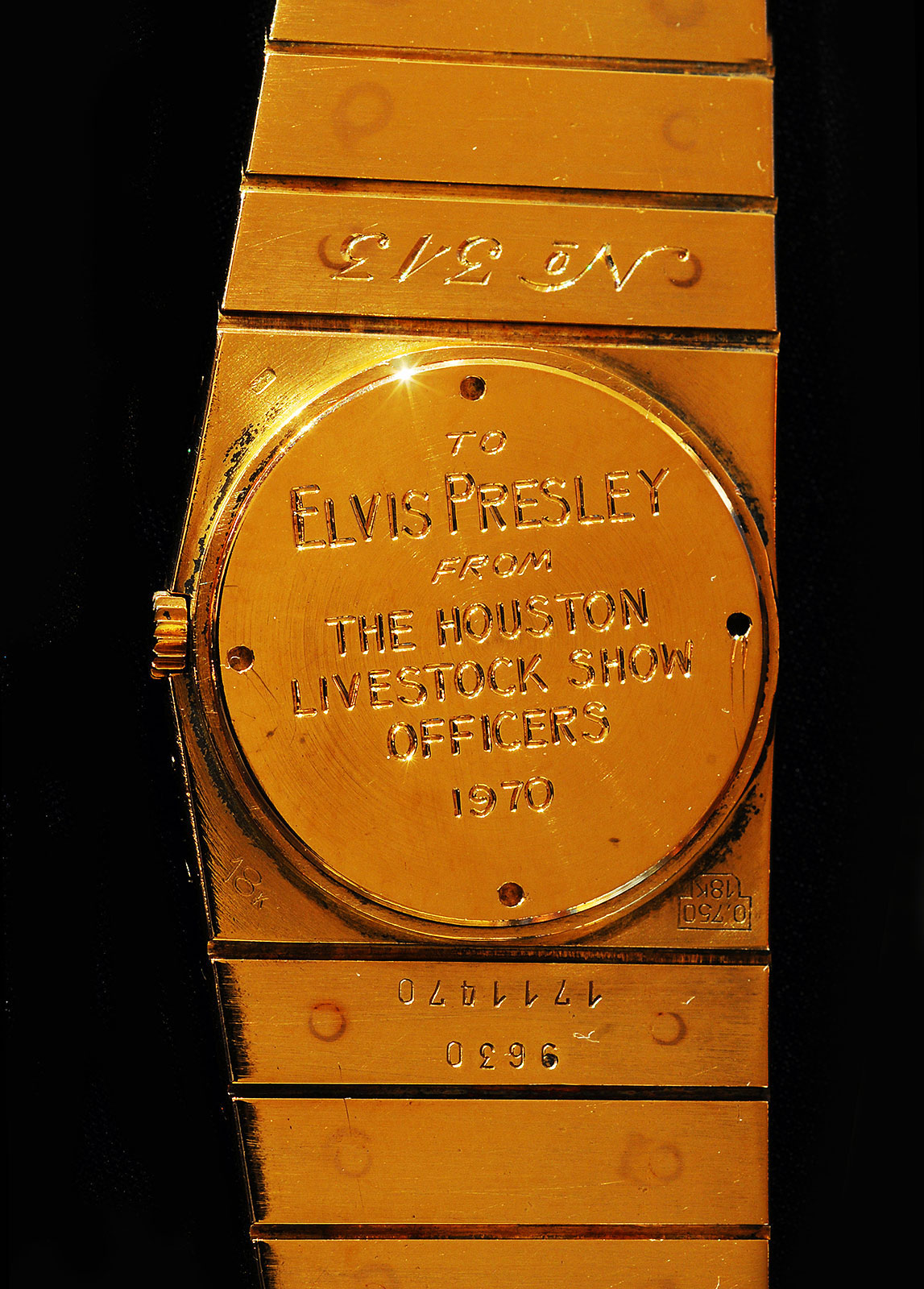The Best Looking Rolex Day-Dates You’ve Never Seen
In 1956, Rolex unveiled the Day-Date watch featuring its groundbreaking Datejust technology that was supplemented by the addition of a day window. From the get go, the Day-Date was manufactured in precious metals only, including yellow, white and pink gold and platinum. Whilst there had been some diamond setting on the earlier models, it was with the 1800 series, launched in 1960, that Rolex really began to experiment and push the boundaries.

Rolex unveiled the Day-Date Baselworld in 1956. The new watch featured Rolex’s groundbreaking Datejust technology that was supplemented by the addition of a day window. From the get go, the Day-Date was manufactured in precious metals only, including yellow, white and pink gold and platinum. The first references available were the 6510 and 6511 and then in 1957 the second series came in references 6611 (with a coin edge bezel), 6612 (with smooth bezel) and 6613 that was made in platinum in very small numbers. In 1960 the iconic reference 1803 was launched which was again available in yellow, white and pink gold as well as the reference 1804 in platinum. Whilst there had been some diamond setting on the earlier models, it was with the 1800 series that Rolex really began to experiment and push the boundaries.
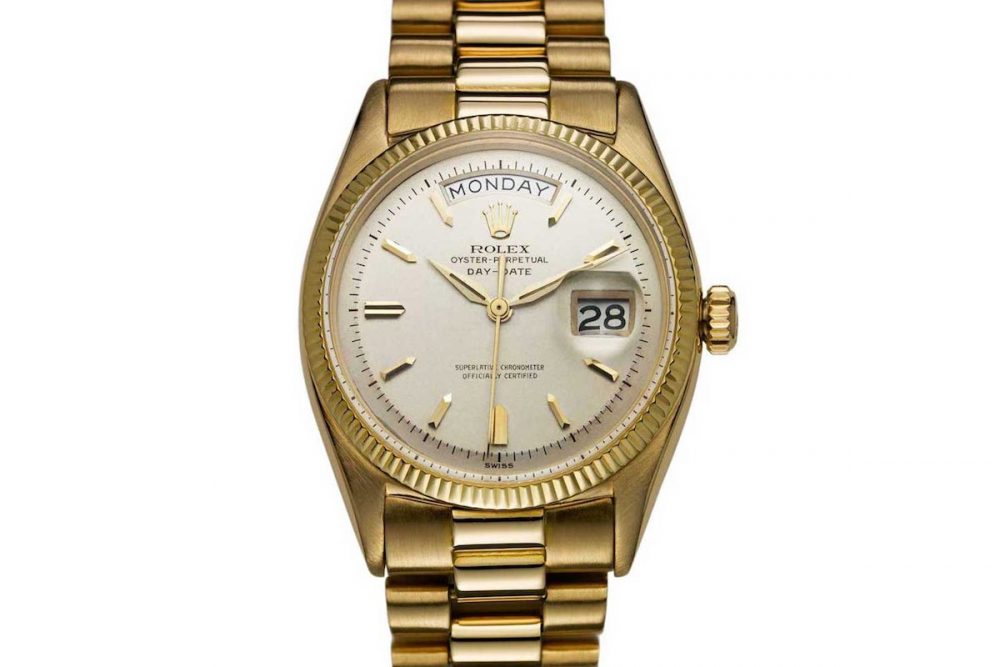
First model of the Rolex-Day-Date from 1956 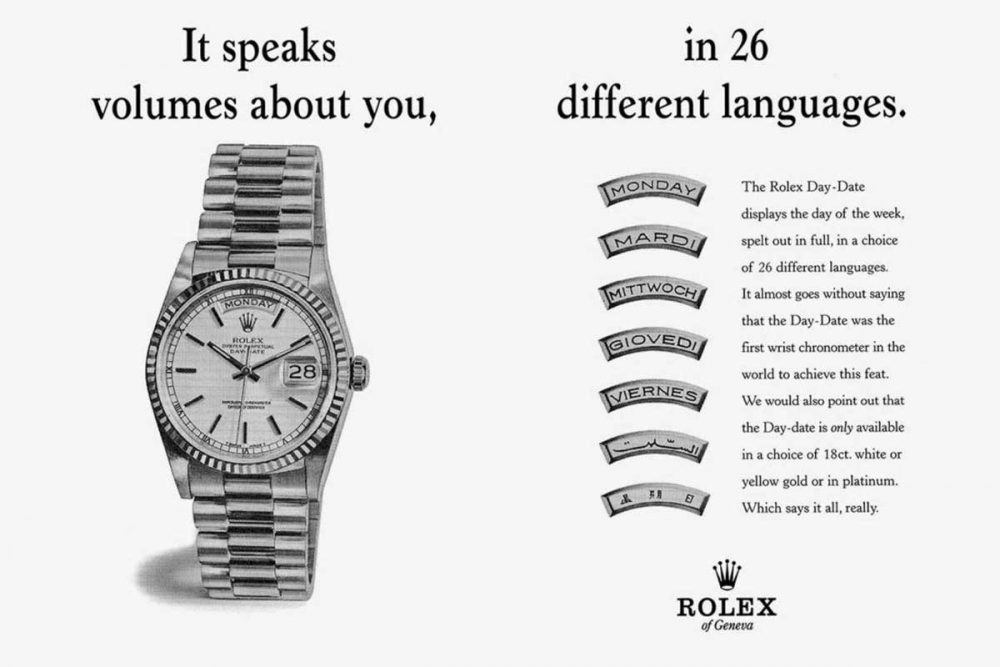
An old advertisement for the Day-Date 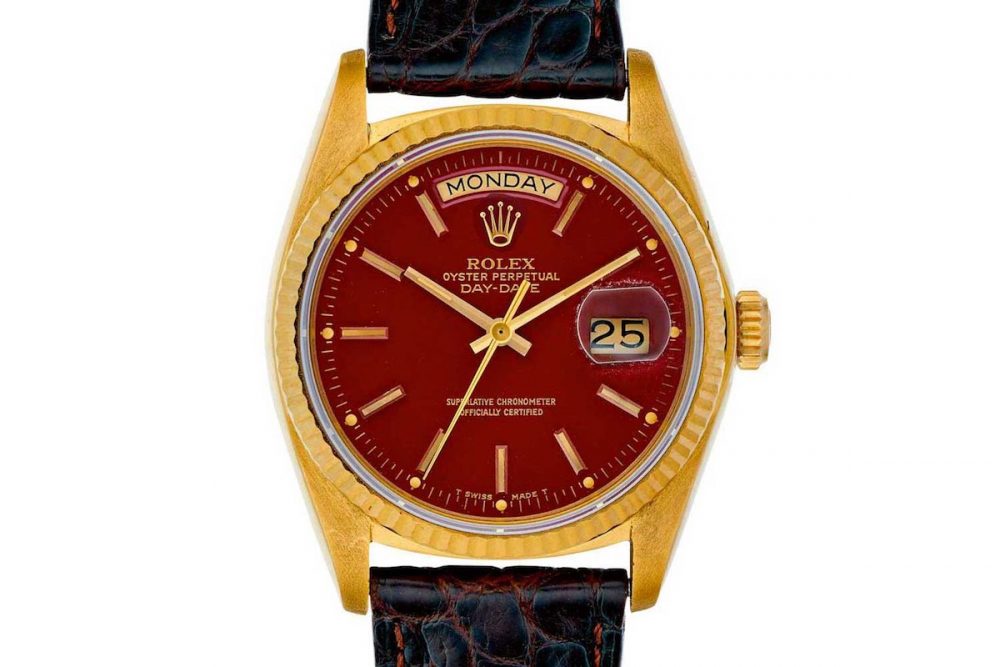
Rolex-Day-Date ref 18038 from 1970s. 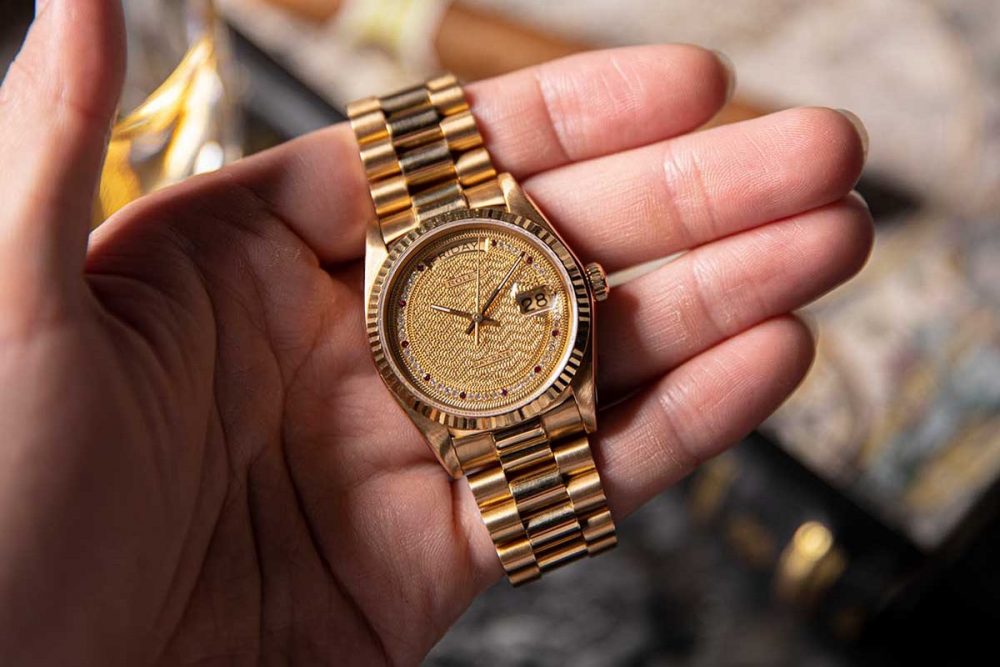
Powered by Rolex Calibre 3055, this gorgeous example of Reference 18038 can be checked out at the Revolution Watch Bar in Singapore. The watch features a Missoni dial—a solid gold champagne dial engraved with the famed zigzag stripe motif from the Italian fashion house. (© Revolution) 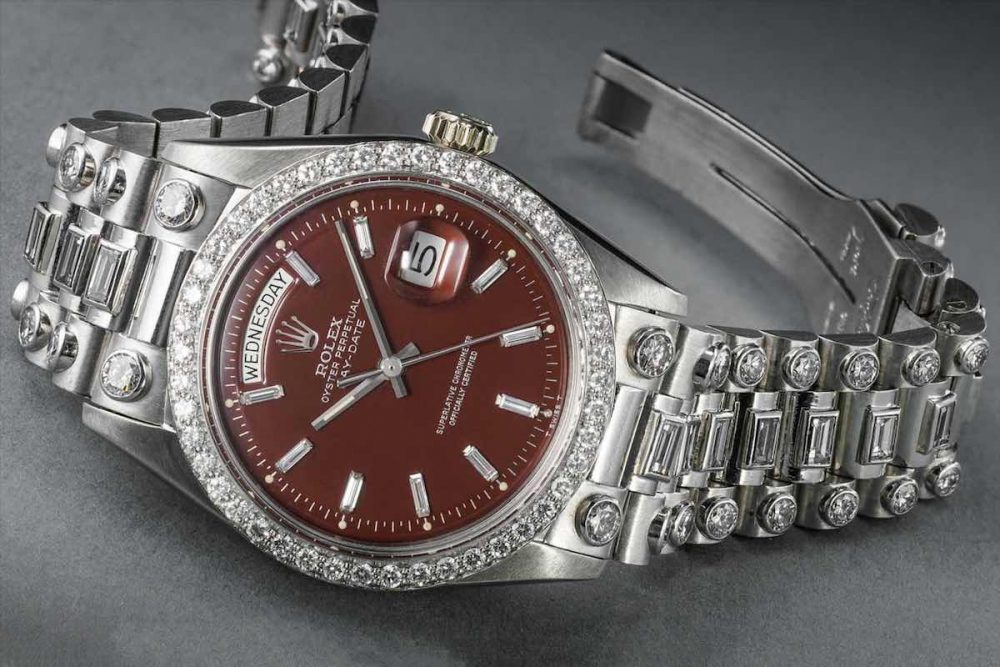
A platinum and diamond set Rolex ref. 1804 with a burgundy Stella dial from 1972. Image: Phillips 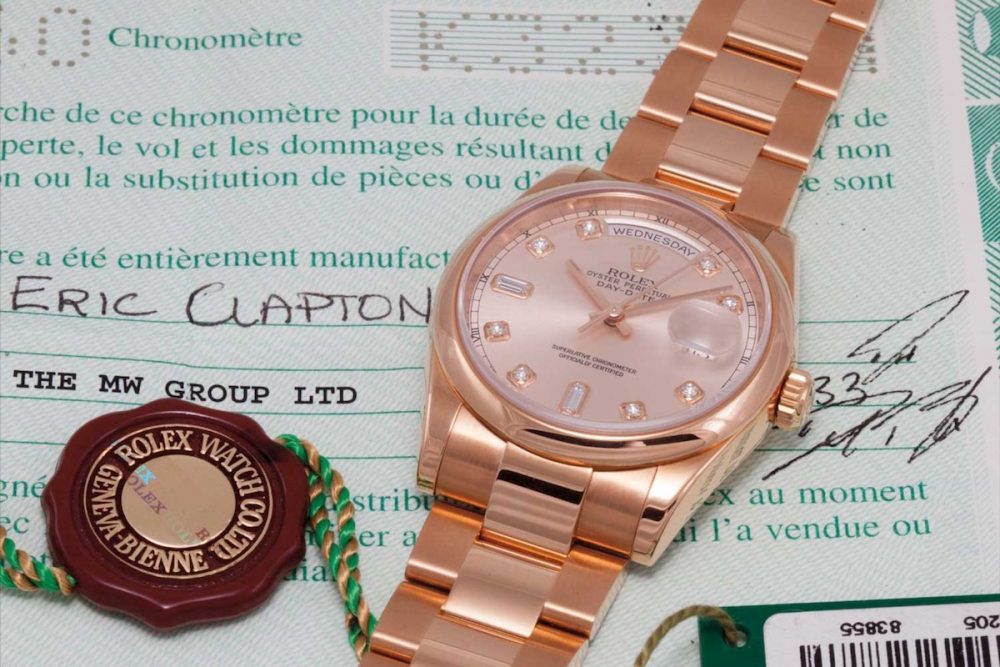
A pink gold and diamond-set calendar wristwatch with centre seconds, and pink dial, formerly in the collection of Sir Eric Clapton Image: Phillips 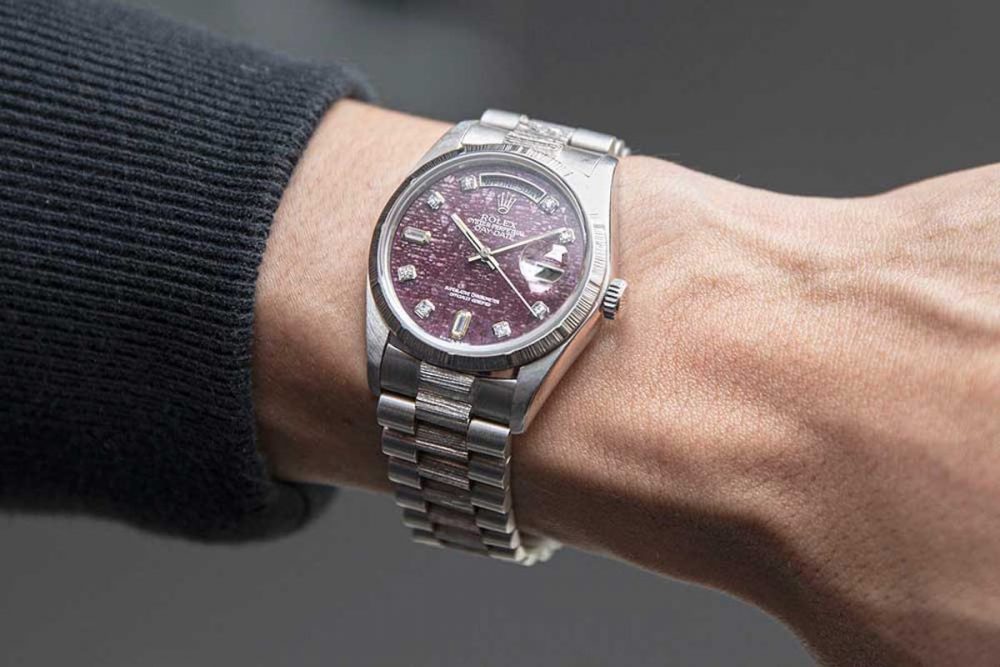
Rolex Day-Date reference 18079 featuring a rubellite dial with baguette-cut diamonds at six and nine o'clock. This gorgeous watch can be seen at Revolution’s Watch Bar in Singapore (© Revolution) 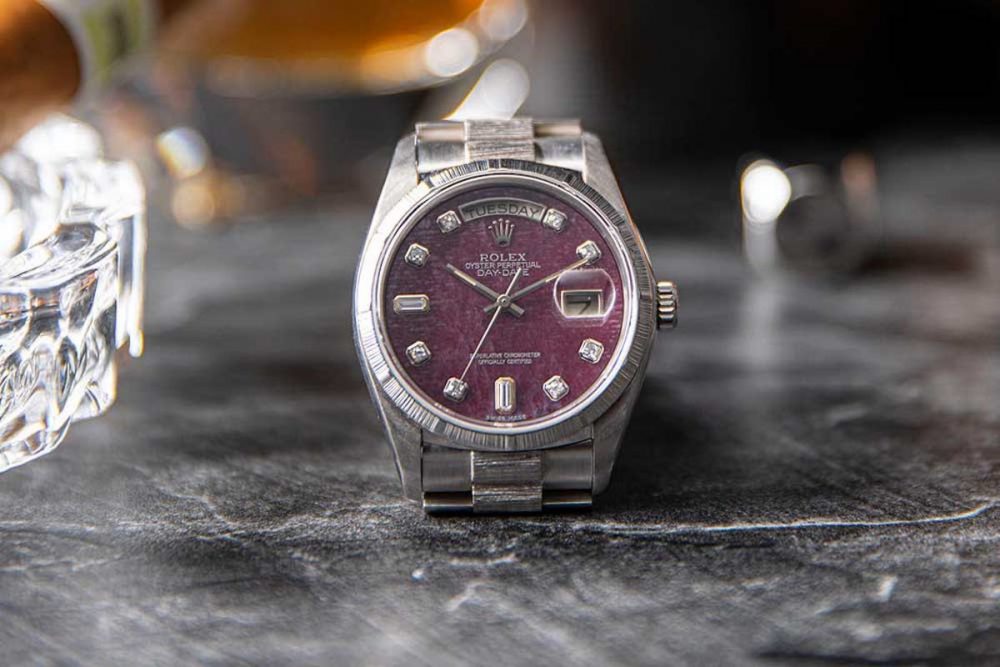
Rolex Day-Date reference 18079 featuring a rubellite dial with baguette-cut diamonds at six and nine o'clock. This gorgeous watch can be seen at Revolution’s Watch Bar in Singapore. 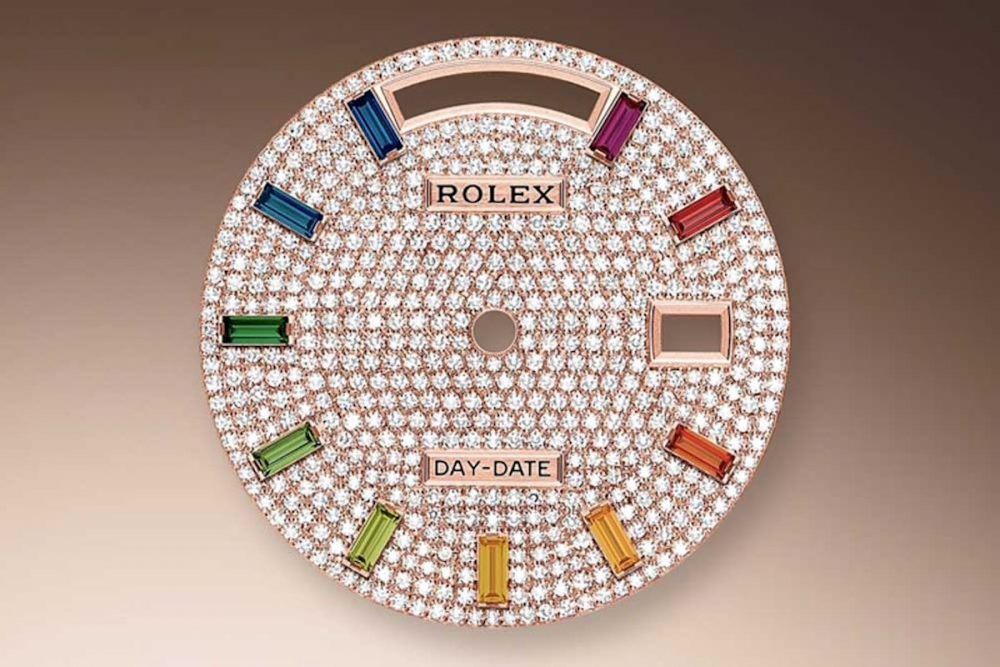
Each stone on a Rolex pave dial is checked by eye and compared with master stones to ensure only the finest examples make it onto watches 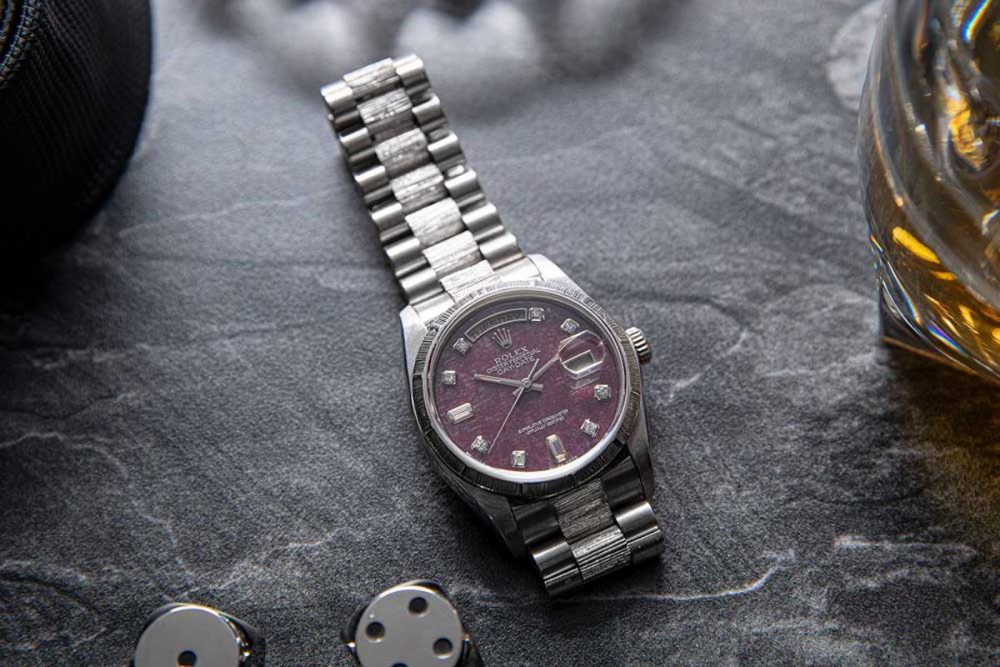
Rolex Day-Date reference 18079 featuring a rubellite dial with baguette-cut diamonds at six and nine o'clock. This gorgeous watch can be seen at Revolution’s Watch Bar in Singapore. 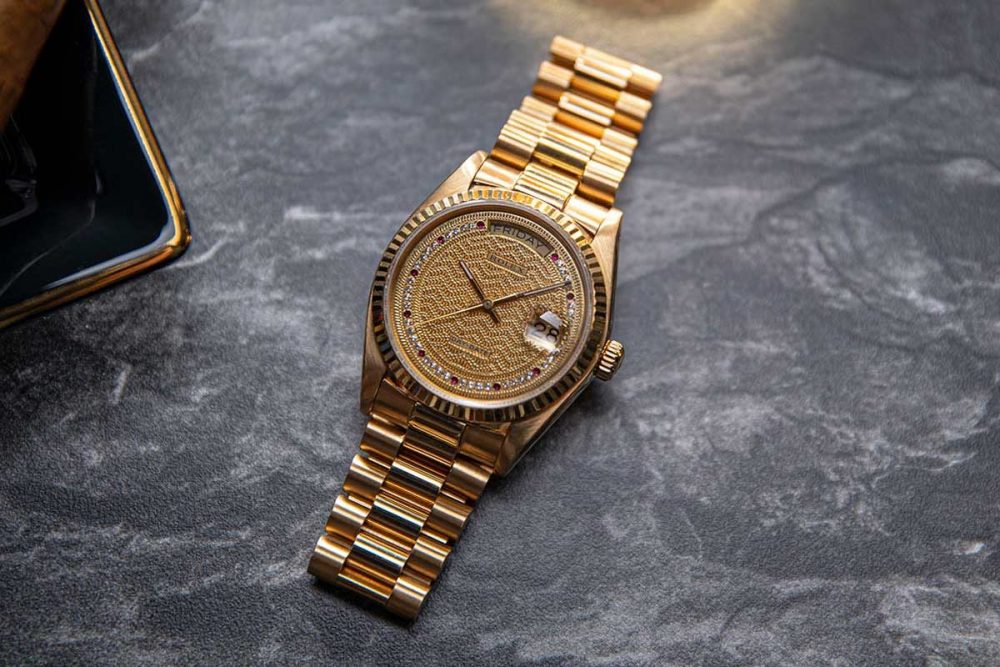
A rare example of the Rolex Day-Date ref.18038 in 18k yellow gold can be checked out at the Revolution Watch Bar in Singapore.












